Divers usually think of PADI, SSI, NAUI, BSAC, or a technical agency such as TDI or IANTD, when considering a dive-training agency. Aside from basic life-support courses in CPR/first aid and secondary care and O2 administration, however, few agencies offer courses specific to dealing with dive incidents, dive safety, marine-life injuries and decompression sickness. Although we often think only of the Divers Alert Network (DAN) as providing access to insurance, hyperbaric support in local communities and promotion of safe diving practices, they also offer specific training courses that benefit all divers, not just dive professionals. Here’s a rundown of the DAN dive safety courses you can take.
First Aid for Hazardous Marine Life Injuries
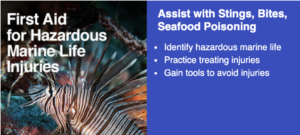
Would you know how to help your dive buddy if he had a jellyfish sting, sea urchin wound, coral scrape, bite or puncture wound? This course addresses these scenarios and more, and the specific first aid care you should offer. You’ll learn how to assess injuries, how to manage shock, how to treat envenomations and more. This course is essential for divers who enjoy tropical-water diving, particularly those who wear shorty wetsuits or none at all. Photographers who may get closer than intended to their subjects and the reefs can benefit as well.
Neurological Assessment
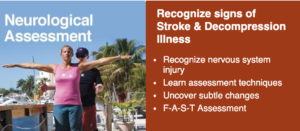
This course trains you to look for signs and symptoms of decompression illness. You’ll learn to record data that may help professionals diagnose if the diver is suffering from DCI following a scuba dive. The DAN field neurological assessment slate helps you asses memory recall. It also guides you through cognitive and motor assessments that help gauge more accurately if a diver needs hyperbaric treatment. This course is ideal for all active divers, but particularly those who dive in remote areas with limited access to dive medical professionals and a hyperbaric chamber.
Emergency Oxygen
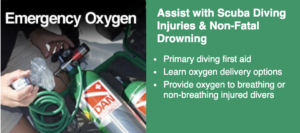
Oxygen delivery is always the first step when treating divers with suspected DCI or an arterial gas embolism (AGE). While most rescue divers learn about O2 delivery, many divers are unsure of how to administer O2 to several injured divers at the same time. Divers in buddy teams or groups may display the same signs and feel the same symptoms. Thus, the DAN Emergency Oxygen course addresses delivering O2 to divers at the same time from one unit. It teaches students how to prioritize who receives what via different delivery methods. This course is perfect for all active divers. It will particularly benefit those who dive with a buddy and not as part of an organized charter trip with professionals and O2 on site.
Diving Emergency Management Provider
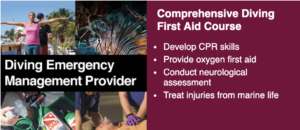
When diving accidents happen, they usually result in multiple injuries. This multi-faceted course combines the DAN First Aid course, Hazardous Marine Life Injuries, Neurological Assessment and Emergency Oxygen provider. It’s suitable for all active divers and dive professionals.
Diving First Aid for Professional Divers
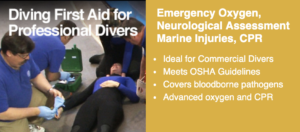
This course encompasses information from the above courses, as well as CPR/first aid and secondary care. The course meets U.S. Occupational Safety and Health Administration (OSHA) guidelines for workplace CPR and first aid and is suitable for commercial, professional, scientific and aquarium divers.
DANs revised e-learning platform makes learning convenient and enjoyable, with embedded video and self-assessments. You will always have access to the latest guidelines and content when revisions are implemented. The courses can range from ½ day to two days.
Visit the website to find a DAN instructor or instructor trainer near you.
Disclaimer: This article and content is not intended to replace professional medical treatment. Always seek professional treatment if a diver is injured. These courses are not a substitute for excellent buoyancy control, good situational awareness and proper aquatic-life interaction.
Course description images courtesy DAN website

